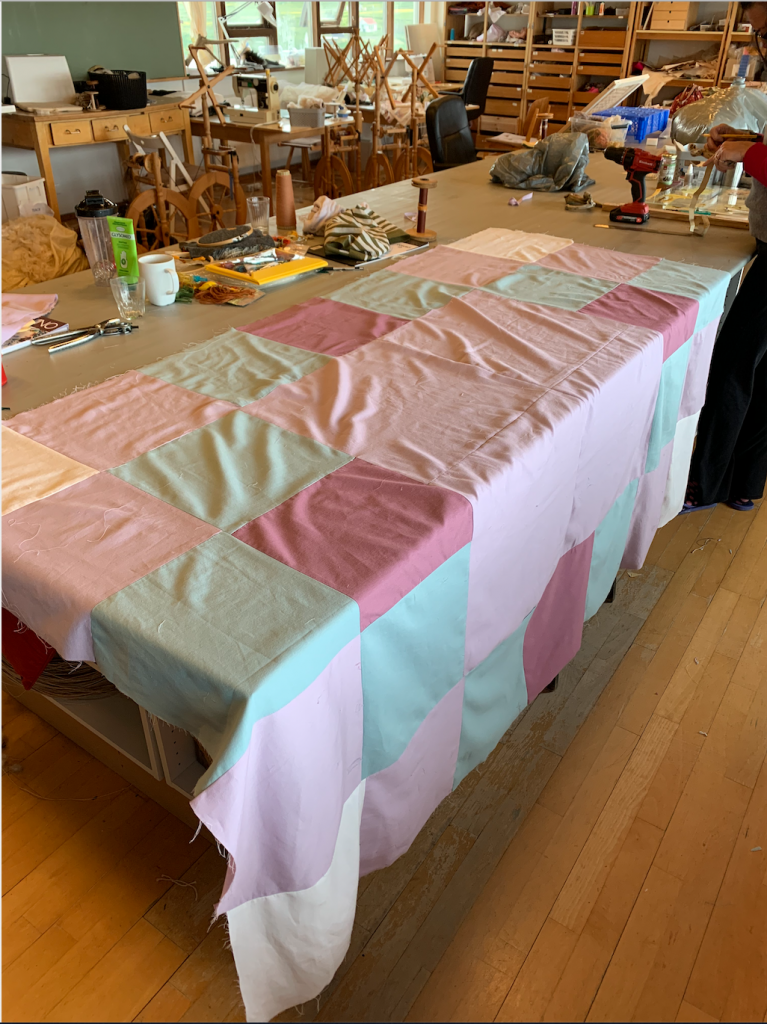As an artist I believe it can be really important to once in a while take a step back and re-set your making. As we move through our practice over many years, it can be only too easy to become reliant on certain modes of making, certain familiar materials, and the constant need to “perfect” what we do. Instead, I think it is really important not to loose sight of art practice as an endless process of lifelong learning, where you are constantly in conversation with your materials and never entirely master of them. After a recent period of intensive making in paper-based collage, I knew that for my work here in Iceland I wanted to push myself out beyond my usual area of material comfort. Coming to Blonduos was an opportunity to try something completely new and see what came out at the end.
I cannot deny the that process has been something of a struggle. At first I found myself overwhelmed by inspiration, then somewhat “scared” of my unfamiliar materials. Later came indecision about the conceptual direction I should take, then hesitation about tackling my final idea. The final intensive period of this journey has been characterized by experimental making, trial and error, and dipping my toes into new technology that I would probably run a mile from in my usual practice.
As my major project here I have decided to create a quilt documenting my own/the collective experience of the Field School. This, I happily admit, is a slightly bonkers idea, since I have never made a quilt in my life. So far the process has been a learning curve, during which I have worked my way through material set backs, acquired new skills, and come to several realizations I would never have otherwise. The following are several points of advice I now find myself ready to impart based on this experience:
1. Trust your first instinct, it’s usually the right way forward.
2. Sewing machines aren’t nearly has complicated as they seem. Feeling intimidated? Just sit down and sew. The worst thing that can happen is that you have to un-pick the stitch and start over. Its not that big a deal, just sew something! Incidentally the infrastructure of a sewing machine is astounding. Have a close look at one someday…whoever thought up that machine was a genius!)
3. The process of quilting is as easy or as complicated as you choose to make it. A perfectly patterned, perfectly assembled quilt is all fine and dandy, but for now I think I will happily stick to my slightly wonky sewing and uneven squares. The evidence of my hand in the making, of recording trial and error and the process of assembly is far more interesting to me than creating something “technically proficient” on the first go. There is something beautiful to be found in the mess, trust me. The “right way” and “perfect” are overrated.
4. Try new technology if you have the opportunity to, you never know what might happen. If it works then that is great, if not, you learnt something and can now go back to your usual way of doing it. It is a win/win either way.
oh and…
5. Never try to hand embroider finicky detail at two o’clock in the morning. If you are tired, you loose concentration and end up spending 45 minutes embroidering the wrong part of your work. Again this is simply a case of unpicking the stitch and starting over. It’s not a global crisis, but it can wait till the morning…go to bed!
Also…
6. When all else fails, there is nothing that a cup of strong black tea brewed 4 minutes with oat milk can’t solve. It is fantastic and a balm to all life’s ills. You should try it.
That is all! Happy making!
Jacob Le Gallais, MA, BFA (Student, Ph.D. Art Education)

